Abstract
A total of 78 strains of Haemophilus vaginalis were examined for 104 features. All strains fermented dextrin, maltose, and starch. Additionally, more than 90% of the strains fermented galactose, glucose, and ribose. Arbutin, cellobiose, melibiose, rhamnose, and salicin were not fermented by any of these strains. None of the strains acidified any of 14 alcohols or alkalinized any of 25 organic salts and amides. More than 90% of the strains hemolyzed human blood agar and hydrolyzed hippurate. No strain hemolyzed sheep blood agar. A recommendation is included for those minimal features that best differentiate H. vaginalis from other oxidase- and catalase-negative, gram-negative organisms.
Full text
PDF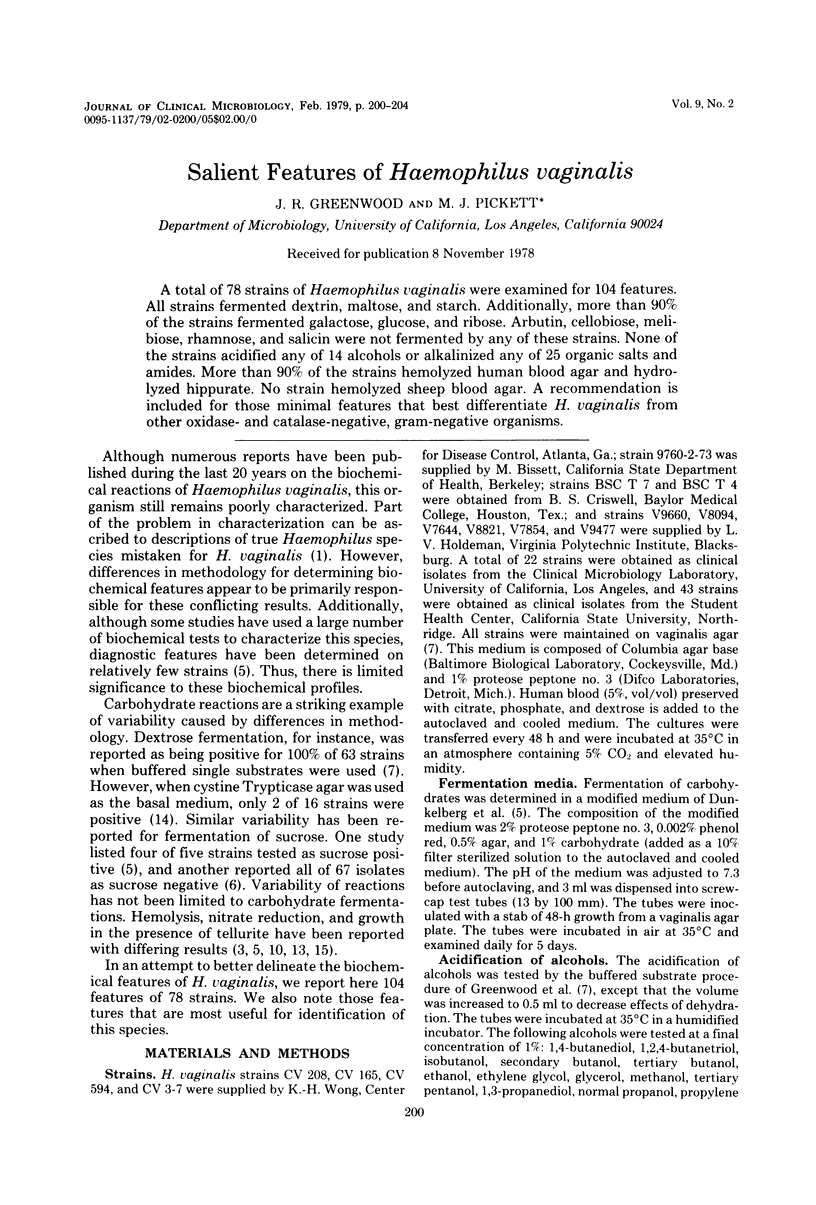
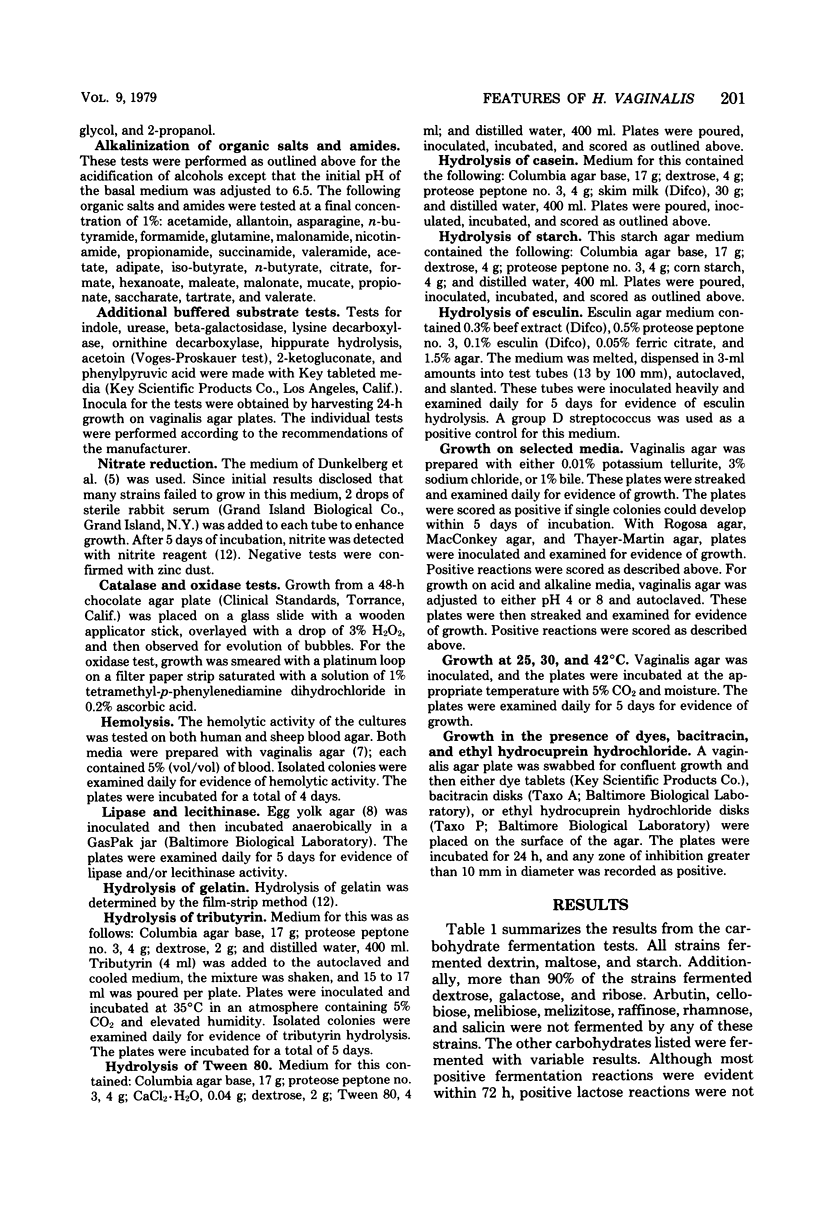
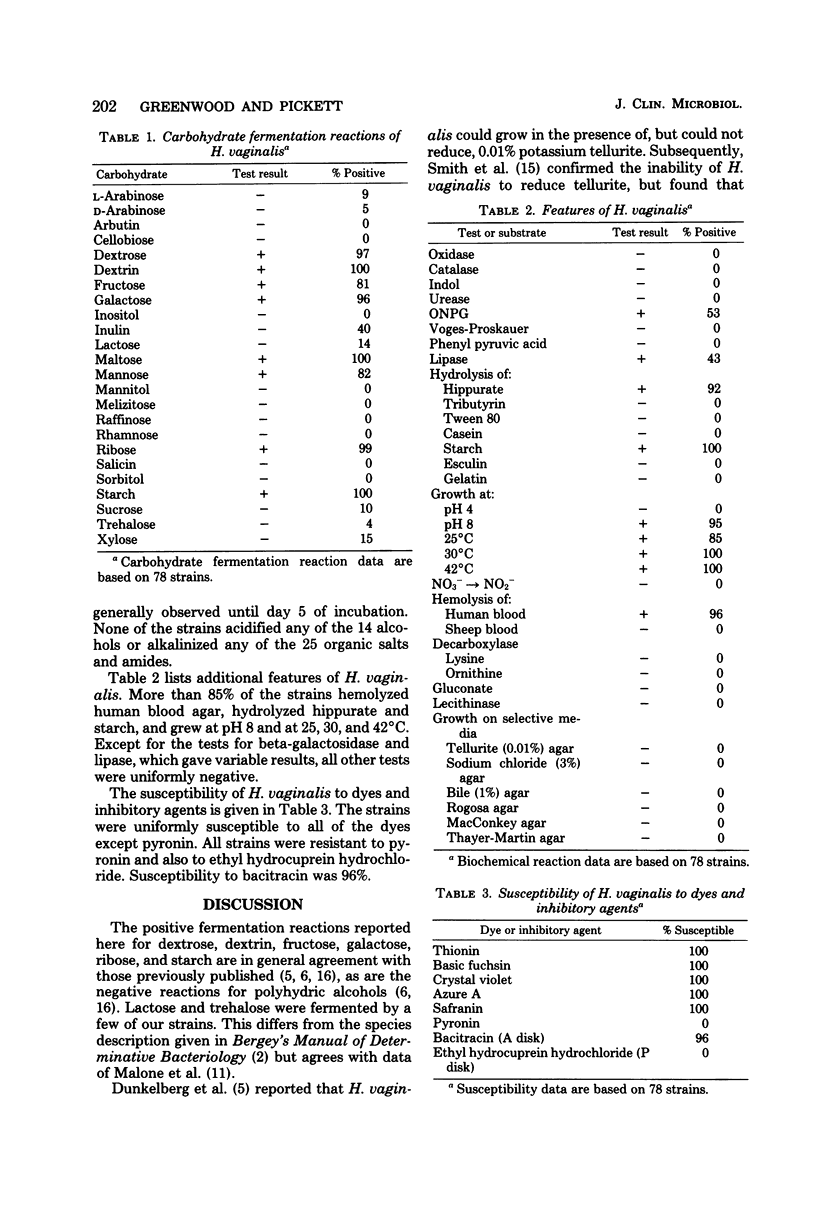
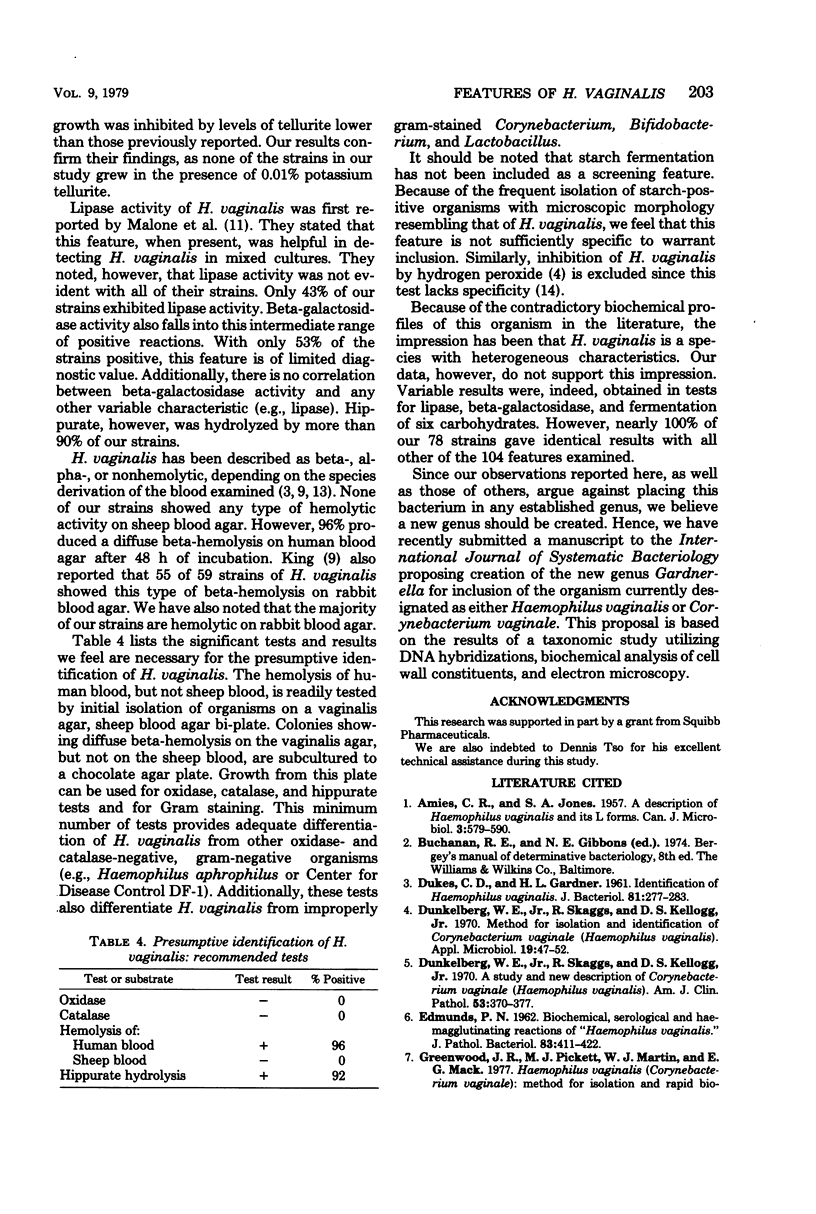
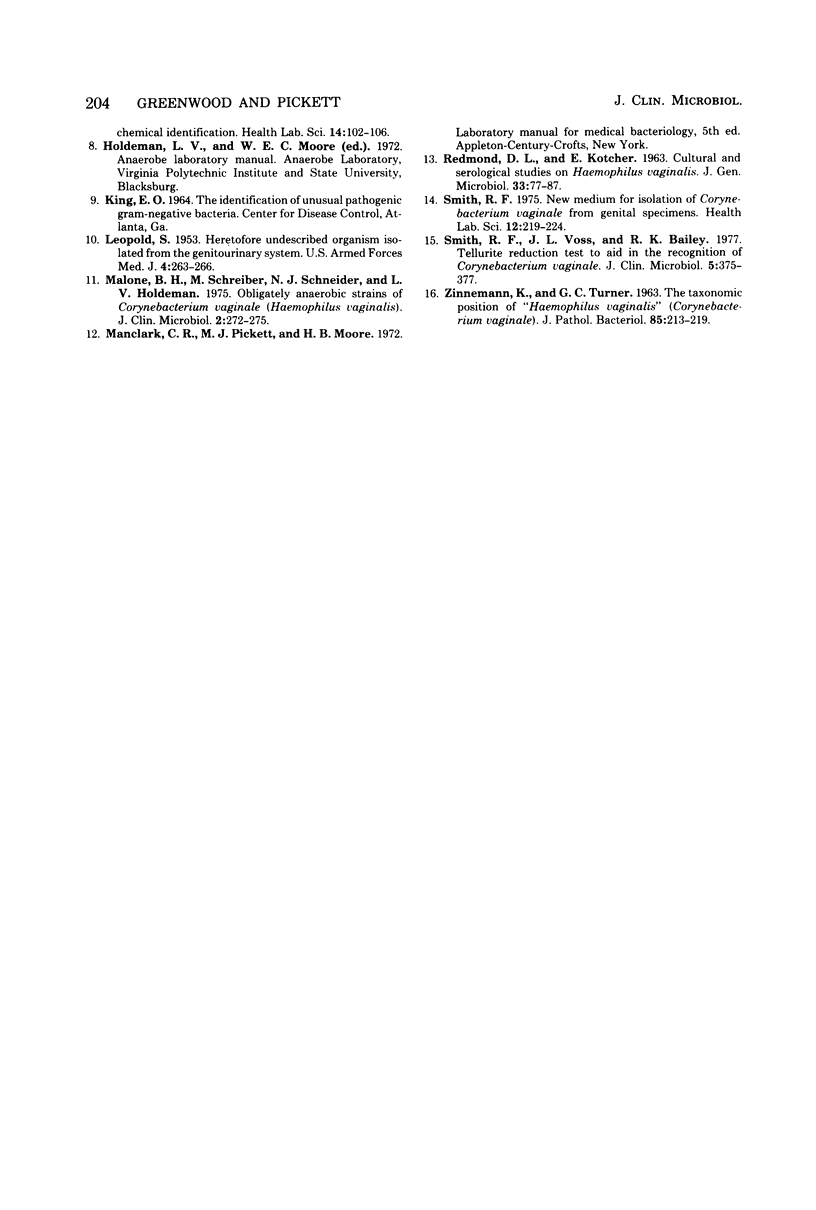
Selected References
These references are in PubMed. This may not be the complete list of references from this article.
- AMIES C. R., JONES S. A. A description of Haemophilus vaginalis and its L forms. Can J Microbiol. 1957 Jun;3(4):579–590. doi: 10.1139/m57-063. [DOI] [PubMed] [Google Scholar]
- DUKES C. D., GARDNER H. L. Identification of Haemophilus vaginalis. J Bacteriol. 1961 Feb;81:277–283. doi: 10.1128/jb.81.2.277-283.1961. [DOI] [PMC free article] [PubMed] [Google Scholar]
- Dunkelberg W. E., Jr, Skaggs R., Kellogg D. S., Jr A study and new description of Corynebacterium vaginale (Haemophilus vaginalis). Am J Clin Pathol. 1970 Mar;53(3):370–377. doi: 10.1093/ajcp/53.3.370. [DOI] [PubMed] [Google Scholar]
- Dunkelberg W. E., Jr, Skaggs R., Kellogg D. S., Jr Method for isolation and identification of Corynebacterium vaginale (Haemophilus vaginalis). Appl Microbiol. 1970 Jan;19(1):47–52. doi: 10.1128/am.19.1.47-52.1970. [DOI] [PMC free article] [PubMed] [Google Scholar]
- EDMUNDS P. N. The biochemical, serological and haemagglutinating reactions of "Haemophilus vaginalis". J Pathol Bacteriol. 1962 Apr;83:411–422. doi: 10.1002/path.1700830211. [DOI] [PubMed] [Google Scholar]
- Greenwood J. R., Pickett M. J., Martin W. J., Mack E. G. Heamophilus vaginalis (Corynebacterium vaginal): method for isolation and rapid biochemical identification. Health Lab Sci. 1977 Apr;14(2):102–106. [PubMed] [Google Scholar]
- LEOPOLD S. Heretofore undescribed organism isolated from the genitourinary system. U S Armed Forces Med J. 1953 Feb;4(2):263–266. [PubMed] [Google Scholar]
- Malone B. H., Schreiber M., Schneider N. J., Holdeman L. V. Obligately anaerobic strains of Corynebacterium vaginale (Haemophilus vaginalis). J Clin Microbiol. 1975 Sep;2(3):272–275. doi: 10.1128/jcm.2.3.272-275.1975. [DOI] [PMC free article] [PubMed] [Google Scholar]
- REDMOND D. L., KOTCHER E. CULTURAL AND SEROLOGICAL STUDIES ON HAEMOPHILUS VAGINALIS. J Gen Microbiol. 1963 Oct;33:77–87. doi: 10.1099/00221287-33-1-77. [DOI] [PubMed] [Google Scholar]
- Smith R. F. New medium for isolation of Corynebacterium vaginale from genital specimens. Health Lab Sci. 1975 Jul;12(3):219–224. [PubMed] [Google Scholar]
- Smith R. F., Voss J. L., Bailey R. K. Tellurite reduction test to aid in the recognition of Corynebacterium vaginale. J Clin Microbiol. 1977 Mar;5(3):375–377. doi: 10.1128/jcm.5.3.375-377.1977. [DOI] [PMC free article] [PubMed] [Google Scholar]


